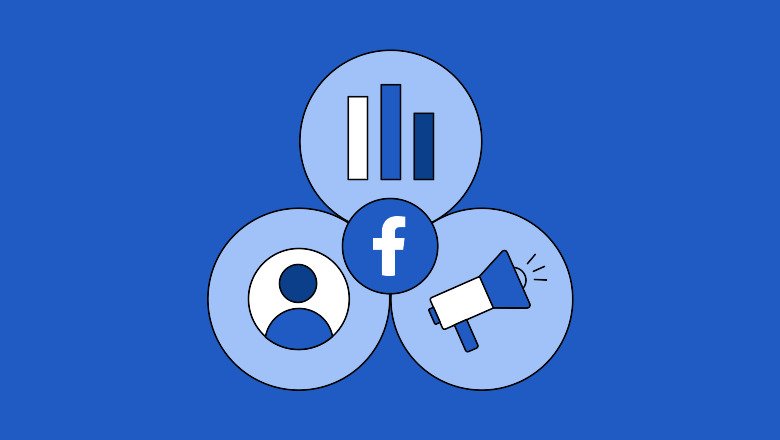How to Create High Facebook Traffic in 2025
What Are Facebook Traffic Campaigns
Facebook Traffic Campaigns are advertising campaigns with the primary objective of driving clicks to your website or other digital assets. Unlike conversion campaigns that focus on sales or lead generation, traffic campaigns prioritize sending users to a destination where they can engage further with your brand.
Common traffic destinations include:
- Website pages (home, product, blog, etc.)
- Landing pages for offers or subscriptions
- Mobile app installs or deep links
- Messenger conversations
Why Are Traffic Campaigns Important
1. Increase Website Visitors
More traffic means more opportunities for users to learn about your products or services.
2. Build Audience for Retargeting
Visitors to your website can later be retargeted with conversion campaigns, increasing chances of sales.
3. Boost Brand Awareness
Driving users to your site enhances familiarity and trust with your brand.
4. Improve SEO and Online Presence
Increased traffic and engagement signals can indirectly benefit your search engine rankings.
When to Use Facebook Traffic Campaigns
Traffic campaigns are ideal when you want to:
- Launch a new website or product page
- Promote blog posts or content marketing
- Drive visitors to sales funnels or lead magnets
- Increase app downloads or messenger interactions
How to Create a Facebook Traffic Campaign: Step-by-Step Guide
Step 1: Open Facebook Ads Manager
Go to facebook.com/adsmanager and sign in.
Step 2: Click “Create” to Start a New Campaign
Select Create to launch a new campaign.
Step 3: Choose the Traffic Objective
From the list of objectives, select Traffic.
Step 4: Name Your Campaign
Use a clear, descriptive campaign name like “Spring 2025 Website Traffic Campaign.”
Step 5: Define Your Target Audience
Specify location, age, gender, interests, behaviors, and custom/lookalike audiences.
Step 6: Select Placements
Choose automatic placements for optimal delivery or manual placements such as Facebook Feed, Instagram Feed, Stories, etc.
Step 7: Set Budget and Schedule
Decide on a daily or lifetime budget and select start and end dates.
Step 8: Create Your Ad
- Use compelling images or videos relevant to your offer.
- Write persuasive ad copy with a clear call-to-action (CTA) such as “Visit Website” or “Learn More.”
- Add the destination URL where you want to send traffic.
Best Practices for Facebook Traffic Campaigns
1. Optimize Landing Pages
Ensure your landing pages load quickly, are mobile-friendly, and align with your ad message.
2. Use Clear and Persuasive CTAs
Encourage users to take action with strong CTAs like “Shop Now,” “Download Free Guide,” or “Sign Up Today.”
3. Target the Right Audience
Use detailed targeting and lookalike audiences to reach users most likely to be interested.
4. Test Different Creatives
Experiment with images, videos, headlines, and descriptions to find what drives the most clicks.
5. Monitor Click-Through Rate (CTR)
A high CTR indicates your ads resonate well with your audience.
6. Use UTM Parameters
Add tracking codes to URLs to measure traffic sources accurately in Google Analytics.
Measuring Success of Traffic Campaigns
Track the following metrics to evaluate your campaign:
- Clicks: Total number of clicks to your destination.
- Click-Through Rate (CTR): Percentage of impressions that resulted in clicks.
- Cost Per Click (CPC): How much you pay on average for each click.
- Bounce Rate: Percentage of visitors who leave your site quickly (should be low).
- Conversion Rate: Percentage of visitors completing desired actions (if tracked).
- Engagement Metrics: Time on site, pages per session, etc.
Advanced Strategies to Maximize Traffic Campaigns
1. Use Retargeting Campaigns
Re-engage users who visited your site but didn’t convert with specific follow-up ads.
2. Leverage Lookalike Audiences
Target people similar to your best customers to drive high-quality traffic.
3. Combine with Content Marketing
Promote blog posts or videos to attract and nurture visitors.
4. Optimize for Mobile Traffic
Ensure all pages and ads are optimized for mobile devices, as most Facebook traffic comes from mobile.
5. Schedule Ads for Peak Times
Use Facebook Insights to identify when your audience is most active.
Common Mistakes to Avoid
- Sending traffic to irrelevant or poor-quality landing pages
- Neglecting mobile optimization
- Using vague or weak call-to-actions
- Targeting too broad or irrelevant audiences
- Not tracking or analyzing campaign data regularly
Conclusion: Why Facebook Traffic Campaigns Are Essential for Your Business in 2025
Driving quality traffic is the lifeblood of digital marketing success. Facebook Traffic Campaigns allow you to attract the right visitors, nurture leads, and build a foundation for conversions and sales. By setting clear goals, targeting effectively, and optimizing your ads and landing pages, you can harness the full potential of Facebook’s vast user base.
Start planning your Facebook Traffic Campaign today to grow your audience, increase website visitors, and boost your business performance in 2025.

